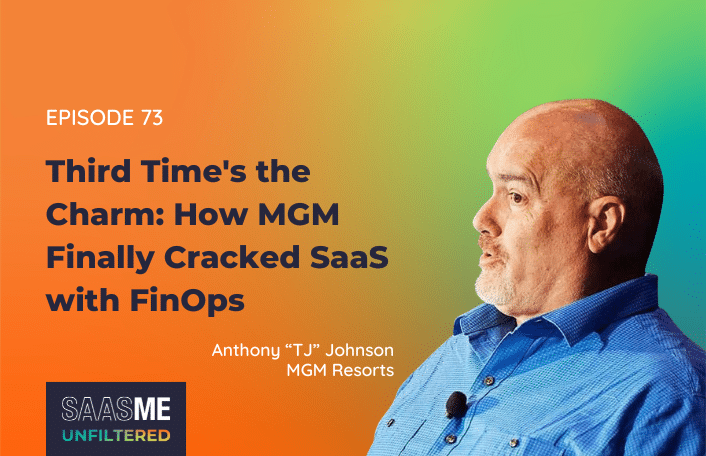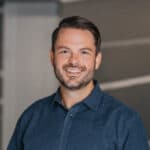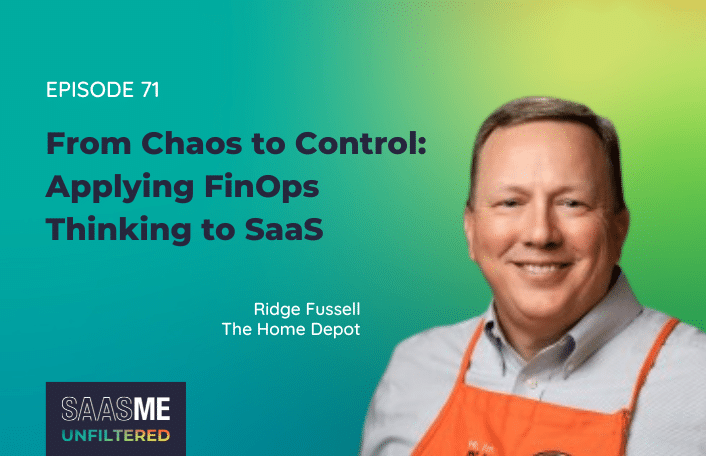
5 Things FinOps Pros Need to Know about SaaS Management
Table of Contents ToggleEpisode SummaryGuest SpotlightEpisode Highlights1. Why SaaS Management Failed...
Back
Back
Search for Keywords...
Blog

08/21/2025
Table of Contents
After several attempts to launch a successful SaaS Management program, TJ Johnson recognized that the FinOps approach needed to shift. As Lead Architect for Platform Economics at MGM Resorts International, he shares how starting with visibility—before diving into optimization—helped his team finally gain traction. In this episode, you’ll learn the mindset change that made the difference, how to pick the right starting point, and what it really takes to make FinOps work for SaaS.
Chapters:
For many FinOps leaders, SaaS is the frontier that tests their discipline. Cloud may have a playbook, but SaaS continues to sprawl—across teams, budgets, and shadow purchases. Few know that better than TJ Johnson, Lead Architect for Platform Economics at MGM Resorts International.
When MGM first attempted SaaS Management, it failed—three times. Programs lost steam, ownership shifted, and efforts collapsed under their own weight. What finally worked was a radical mindset shift: stop chasing optimization, and start by knowing what you have.
As TJ put it, “It doesn’t have to be optimization day one, it’s really knowing what you have day one that sets that tone forward.”
That reset allowed MGM to build a foundation of SaaS visibility, establishing a single source of truth across scattered systems, rationalizing redundant apps, and designing a new software intake process that balanced enablement with governance.
The harder part came after the process was designed. Employees were hesitant when faced with a slower, more deliberate workflow. To keep the effort alive, TJ’s team leaned on change management: education sessions, transparency around goals, and even company-wide town halls to explain the why. Over time, adoption grew—and so did results.
The key, TJ emphasized, is remembering that SaaS Management should align spend with value: “You’re paying for the value that the application brings, not only just the users that use the application.”
By reframing FinOps practices for SaaS, MGM is now moving toward a larger vision: tech optimization. That means delivering cost accountability at the VP level across all technologies, SaaS included.
For FinOps professionals looking to bring SaaS under control, this episode offers both realism and inspiration. The first step isn’t slashing costs. The real starting point is building the visibility and governance to make smarter decisions tomorrow.
Before MGM found success, it had already attempted SaaS Management three times. Each time the program fizzled, people came and went, ownership was unclear, and no single source of truth existed. What finally changed was starting smaller, with a tighter focus and a realistic scope.
“We’ve actually attempted to do this in the past…three or four times. Unfortunately we were not very successful with it. We just had people coming in and out, and it wasn’t the consistency that we needed. The other side of that is we realized…we don’t even have the people that can do the practice internally. So we said, let’s finally do this. Let’s do it at this pace, let’s do it at this size, and let’s grow the practice.”
Johnson emphasizes that SaaS Management begins with visibility, not optimization. MGM first needed to answer basic questions: what software they had, who was using it, and what contracts said. Only then could they build toward rationalization and cost savings.
“We think there’s waste somewhere in there. We’re not identifying it because we don’t even know what we have. So the first thing we want to do is, what do we have? Let’s figure that out first. Let’s figure out the users, let’s figure out what the contracts say, let’s figure out all that stuff, but let’s start here. You know, it doesn’t have to be optimization day one, it’s really knowing what you have day one that really sets that tone forward.”
During the discovery phase, MGM uncovered extreme redundancy, like having 42 project management tools in circulation. This realization led to a new software intake process designed to prevent duplicates and ensure that new requests aligned with existing solutions.
“When we go through the process, you start to recognize how many redundant things we have. We actually implemented a new software intake process that allowed us to double check if we don’t already have a solution in place. If you already have a solution, then you have to see if you can conform to that before moving forward.”
Rolling out the intake process created friction. Employees didn’t love a slower, more deliberate approach. To overcome this, Johnson leaned heavily on communication and transparency. Town halls and pre-rollout education sessions helped employees understand the “why” and buy in.
“We actually had an announcement at one of our town halls and we talked about the new process. We walked everybody through it. Explaining why we were doing it and the value we’d get as an organization switched things for them. I think they understand now—better security, easier provisioning, everything set up correctly.”
For Johnson, SaaS isn’t a separate challenge—it’s the next logical scope for FinOps. By reframing practices like workload optimization into license optimization, the same principles apply. Ultimately, his goal is technology optimization: creating accountability for spend across all technologies, not just SaaS or cloud.
“We are looking at technology optimization across all technologies. We want to get to where we have technology costs at the VP level. So we can say, here is your spend. Is this your budget? Should you be looking at it this way? There’s accountability that comes into play, but it gives us better information to manage all of our technology.”
If you’re a FinOps leader grappling with SaaS for the first time, TJ’s journey is a roadmap for turning false starts into lasting progress and building a foundation that leads to true tech optimization.
Want more stories like this? Subscribe to SaaSMe Unfiltered on your favorite podcast platform.
The Definitive Guide to SaaS Management
Learn MoreABOUT THE AUTHOR

Cory Wheeler
As Zylo’s Chief Customer Officer, Cory is responsible for helping our customers drive ROI and SaaS Management success with Zylo. He helps companies of all sizes effectively discover, optimize, and govern their SaaS through Zylo’s platform and services. Prior to founding Zylo, Cory spent 15 years in finance and procurement, managing categories and sourcing teams at Arthur Andersen, BearingPoint, and both Takeda and Astellas Pharmaceuticals. He built the procurement organization at ExactTarget, and managed the integration with the Salesforce Marketing Cloud procurement organization in 2015. He and his family reside in Indianapolis, IN, where they can be found cheering for the Purdue Boilermakers and Chicago Cubs.

Table of Contents ToggleEpisode SummaryGuest SpotlightEpisode Highlights1. Why SaaS Management Failed...

Table of Contents ToggleEpisode SummaryGuest SpotlightEpisode Highlights1. Why SaaS Management Failed...

Table of Contents ToggleHow FinOps Teams Commonly Understand SaaS—and What’s MissingSaaS...

Table of Contents ToggleDefining ITAM, SAM, and FinOpsHow FinOps and ITAM...
| Cookie | Duration | Description |
|---|---|---|
| cookielawinfo-checkbox-analytics | 11 months | This cookie is set by GDPR Cookie Consent plugin. The cookie is used to store the user consent for the cookies in the category "Analytics". |
| cookielawinfo-checkbox-functional | 11 months | The cookie is set by GDPR cookie consent to record the user consent for the cookies in the category "Functional". |
| cookielawinfo-checkbox-necessary | 11 months | This cookie is set by GDPR Cookie Consent plugin. The cookies is used to store the user consent for the cookies in the category "Necessary". |
| cookielawinfo-checkbox-others | 11 months | This cookie is set by GDPR Cookie Consent plugin. The cookie is used to store the user consent for the cookies in the category "Other. |
| cookielawinfo-checkbox-performance | 11 months | This cookie is set by GDPR Cookie Consent plugin. The cookie is used to store the user consent for the cookies in the category "Performance". |
| viewed_cookie_policy | 11 months | The cookie is set by the GDPR Cookie Consent plugin and is used to store whether or not user has consented to the use of cookies. It does not store any personal data. |
